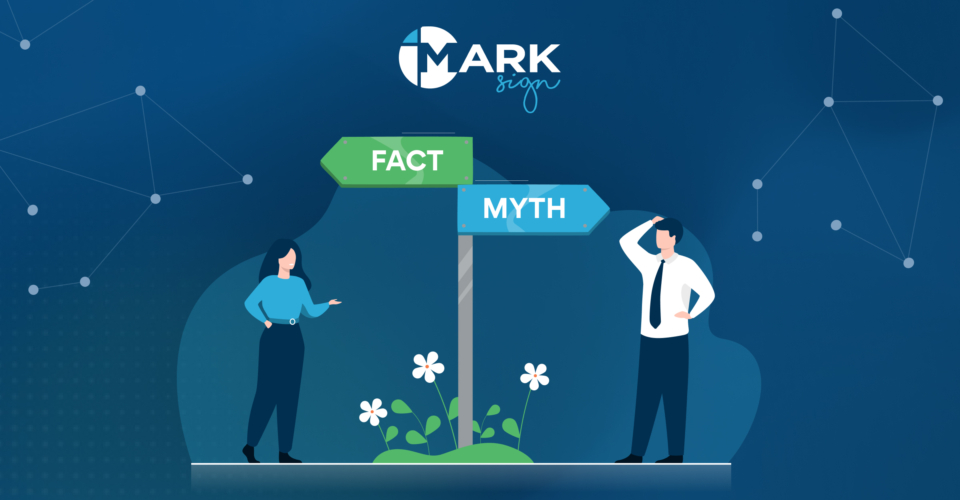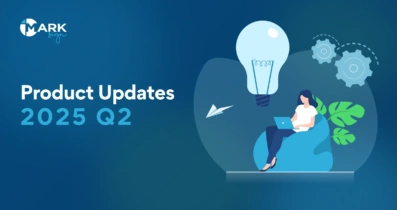Electronic signatures are quickly becoming a standard business practice across Europe. In 2023, as many as 35% of Lithuanians were already using a qualified electronic signature.
However, despite the growing popularity, several myths about eSigning still circulate, slowing down the digitalization process. In this post, we’ll debunk five of the most common myths about electronic signatures.
Myth #1 – eSignatures are not legally valid or secure
When discussing the legality and security of eSignatures, it’s important to understand that different levels of signatures exist. Experts distinguish between three types: simple, advanced, and qualified electronic signatures. These differ in terms of the security level they provide.
A simple eSignature (e.g. your name at the bottom of an email) offers the lowest level of security. On the other hand, a qualified electronic signature provides the highest level of security. It is an advanced electronic signature that’s created using a qualified signature creation device and confirmed with a qualified certificate.
According to the EU’s eIDAS regulation, a qualified electronic signature has the same legal power as a handwritten signature. These signatures can only be issued by certified service providers regulated and audited by supervisory authorities (in Lithuania, this is the Communications Regulatory Authority – RRT).
To use a qualified eSignature, you can choose from a few tools: Mobile-ID (via SIM card from your mobile operator), a USB token from the Lithuanian Centre of Registers, an electronic ID card, or a qualified Smart-ID signature. All these tools confirm your identity, but the actual signing process takes place on an eSigning platform that formally applies your signature to the document.
Myth #2 – eSigning documents is complicated
Many people still believe that eSigning is a technical challenge reserved for IT experts or younger generations. In reality, documents can be signed in just a few clicks using your PIN2 code – the same code you use when logging in to your bank account.
If you already have one of the qualified tools (like Mobile-ID, Smart-ID, or LT ID app), you’re ready to go. Qualified eSignature solutions are designed with the user experience in mind. Modern platforms are intuitive and accessible from any device, allowing you to sign documents anytime and anywhere.
To dispel this myth, the best approach is to try it for yourself. Sign your first document using the Mark Sign self-service today. We’ve prepared a step-by-step guide for your convenience. Simply register, verify your identity using your qualified tool, upload your document, and start signing!
Myth #3 – eSigning is expensive
When someone says “eSigning is expensive,” our first question is – compared to what?
If you compare eSigning with the physical process of signing documents, you need to consider more than just the cost of paper and printing. There are also hidden costs: transportation, storage, time lost waiting for signatures, and the risk of documents being lost, damaged, or forged.
One of our clients, Edufy, shared their experience with paper-based signing:
“We had to print the documents, sign and send them, and often follow up with users to finalize agreements. It could take a while. Then we had to store all the contracts and dig through binders when we needed something. It wasn’t efficient or convenient – especially since we had to do this almost daily.”
Switching from handwritten to electronic signing doesn’t just save money – it also saves time. Without the administrative burden, your employees can focus on work that creates real value for the organization.
Myth #4 – eSignatures are only for large companies
Improved efficiency, reduced costs, and a smoother customer experience benefit all businesses – no matter their size. Many providers of qualified eSignatures offer flexible pricing plans, signature bundles, API integrations, and exclusive features tailored to various business needs.
eSigning is not just for big corporations. In fact, we’re seeing more and more small and medium-sized businesses adopting it to gain a competitive edge and speed up daily operations. Read more about that in this article.
The most important criteria when choosing an eSignature solution is security. Some platforms offer advanced (medium security) signatures, but for maximum protection and legal certainty, we recommend choosing a qualified eSignature solution.
Myth #5 – eSignatures are too impersonal
Electronic signatures don’t have to be dull or generic. More and more eSignature service providers are adding features not only to boost efficiency but also to allow for personalization. For example, some platforms let users upload a digital version of their handwritten signature.
Increasingly, eSignature personalization is being used to strengthen a company’s brand identity. This includes adding visual brand elements to the signing process.
The Mark Sign team allows you to personalize document signing invitations – send branded messages to your colleagues or business partners. Simply upload your logo and your recipient will receive a signature request with your brand elements included. This also applies to personalized qualified eSignatures – from now on, every signature in your documents can become a subtle but powerful extension of your visual identity.
Still have doubts about eSigning? Get in touch: [email protected]



